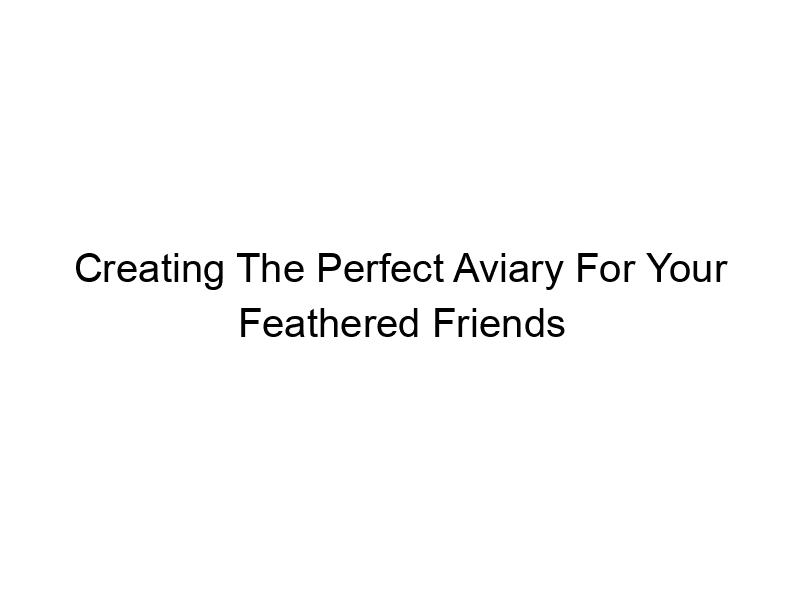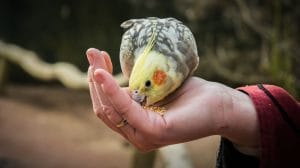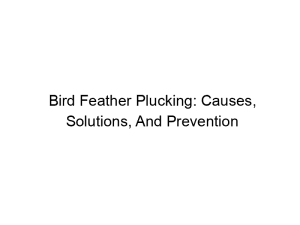Creating a haven for your beloved birds requires careful planning and execution. How to Set Up the Perfect Aviary for Your Pet Birds is more than just providing a cage; it’s about crafting a stimulating, safe, and enriching environment that promotes your birds’ physical and mental well-being. This comprehensive guide will walk you through every step, from choosing the right size and location to selecting appropriate perches and toys, ensuring your avian companions thrive. You’ll learn about essential considerations for different bird species, maintaining hygiene, and troubleshooting common problems.
The foundation of a perfect aviary is its size and location. The space should be sufficiently large to allow your birds ample room for flight, exploration, and social interaction. A cramped aviary can lead to stress, feather plucking, and other behavioral problems. The minimum size depends
greatly on the size and number of your birds. For example, a single cockatiel might be happy in a relatively smaller enclosure, while a flock of larger parrots will need significantly more space. A good rule of thumb is to provide at least 1 cubic foot of space per inch of bird length. Always err on the side of bigger!
Choosing the Ideal Location
Location is critical. Avoid areas with direct sunlight, drafts, or extreme temperature fluctuations. A well-ventilated space, protected from predators and harsh weather conditions is ideal. Consider noise levels as well; excessive noise can stress your birds.
Choosing the Right Aviary Material and Construction
Aviaries can be constructed from various materials, each with advantages and disadvantages. Wire mesh is popular for its visibility and ventilation, but the mesh size must be appropriate to prevent escapes. Solid wood provides better insulation and privacy but requires careful construction to avoid gaps and potential escapes. Consider hybrid options which combine mesh and solid materials. Look for sturdy, durable materials to withstand wear and tear.
Essential Aviary Features: Flooring, Perches, and Accessories
The flooring material should be easy to clean and comfortable for your birds’ feet. Consider using materials like wire mesh, plastic mesh, or even newspaper, changed regularly. Perches should vary in size, diameter, and texture to mimic natural branches. This prevents foot problems and provides a range of options for your birds.
Adding Toys and Enrichment
Toys are crucial for mental stimulation and behavioral enrichment. Offer a variety of toys such as foraging toys, bells, swings, and chew toys. Rotate toys regularly to keep things interesting and prevent boredom.
Creating a Safe and Secure Aviary
Safety is paramount. Ensure your aviary is predator-proof and escape-proof. Check all latches and locks regularly. Secure any potentially hazardous objects inside or outside the enclosure. Consider using bird-safe materials throughout.
Maintaining Aviary Hygiene: Cleaning and Sanitation
Regular cleaning is crucial for preventing the spread of diseases and parasites. Remove droppings daily and thoroughly clean the aviary at least once a week. Use bird-safe disinfectants and allow the aviary to dry completely before returning your birds.
Species-Specific Aviary Requirements
Different bird species have different needs. Research your birds’ specific requirements regarding space, temperature, humidity, and enrichment. Consider the natural habitat of your birds when planning your aviary. Larger birds will clearly need a larger aviary than smaller birds.
Feeding and Watering Systems
Provide multiple food and water bowls or feeders, to ensure every bird has access to resources. Use heavy, stable containers to prevent tipping. Place them at different heights to reduce competition. Consider automatic water dispensers for convenience.
Providing Natural Light and Ventilation
Birds require natural sunlight for vitamin D synthesis. Position the aviary near a window that provides adequate sunlight, but avoid direct sunlight which can cause overheating. Ensure adequate ventilation to prevent the build-up of humidity and harmful gases. Consider a fan for larger aviaries.
Monitoring Bird Health and Behavior
Regularly monitor your birds’ health and behavior. Any changes in appetite, activity levels, or droppings should be investigated. Maintain a daily checklist for weight, droppings, and feather condition. Consult an avian veterinarian if you notice any abnormalities.
Climate Control and Temperature Regulation
Maintaining the ideal temperature is essential, particularly for birds sensitive to temperature fluctuations. Consider using a thermostat-controlled heater or cooling system for larger aviaries. Monitor temperature regularly, especially in extreme weather.
The Importance of Social Interaction and Companionship
Many birds are social creatures and benefit from companionship. If you have multiple birds, ensure they have adequate space and resources to avoid competition. Consider carefully the personalities and compatibility of your birds before housing them together.
Building vs. Buying: A Cost-Benefit Analysis
Whether you build or buy an aviary depends on your skills, budget, and time constraints. Building an aviary can save money but requires considerable time and expertise. Purchasing a pre-made aviary is more convenient but can be more expensive.
Choosing the Right Birds for Your Aviary
Different bird species have different temperament, social needs and space requirements. Consider the size and temperament of the birds you choose, and research their specific needs. Avoid overcrowding and carefully consider whether the species are compatible.
Troubleshooting Common Aviary Problems
Common problems include escapes, illness, feather plucking, and aggression. Address these issues promptly by identifying the root cause and taking appropriate action. Regular maintenance and observation can help prevent many problems.
Frequently Asked Questions
What are the most common mistakes when setting up an aviary?
Common mistakes include choosing an aviary that’s too small, poor ventilation, inadequate cleaning, and neglecting enrichment. Overlooking predator proofing is another frequent error.
How much does it cost to set up an aviary?
Costs vary greatly depending on the size, materials, and features. A small aviary can cost a few hundred dollars, while a large, custom-built aviary can cost thousands.
What are the legal requirements for keeping birds in an aviary?
Legal requirements vary by location. Research local ordinances and permits before acquiring birds. Some species may require special permits.
How do I prevent my birds from escaping?
Regular checks for damage, escape-proof latches and locks, and appropriate mesh size are crucial. Avoid leaving open doors or windows and secure any potential entry points.
How often should I clean my aviary?
Daily spot cleaning, removing droppings and debris, is essential. A thorough cleaning, including disinfecting, should be done weekly.
What types of toys are best for birds?
Foraging toys, chew toys, swings, and bells stimulate mental and physical activity. Rotate toys regularly to maintain engagement.
Final Thoughts
Creating the perfect aviary for your pet birds is a rewarding endeavor that significantly impacts their health, happiness, and longevity. By carefully considering the factors outlined in this guide, you can provide a safe, enriching, and stimulating environment for your feathered friends. Remember, the key is providing a space that closely mimics their natural habitat, while also incorporating elements that encourage natural behaviors. Regular maintenance and attentive observation are essential for ensuring your birds’ well-being. So, take your time, plan carefully, and enjoy the journey of creating a paradise for your avian companions!




